Three-Dimensional Amplitude versus Offset Analysis for Gas Hydrate Identification at Woolsey Mound: Gulf of Mexico
Abstract
:1. Introduction
2. Study Area
3. Materials and Methods
3.1. Data
3.2. Methods
4. Results and Discussions
4.1. AVO Class Identification
4.2. Relationship between Hydrate Concentration and AVO Curve
5. Conclusions
Supplementary Materials
Author Contributions
Funding
Data Availability Statement
Acknowledgments
Conflicts of Interest
References
- Sloan, E.D. Gas hydrates: Review of Physical/Chemical Properties. Energy Fuels 1998, 12, 191–196. [Google Scholar] [CrossRef]
- Sloan, E.D. Fundamental principles and applications of natural gas hydrates. Nature 2003, 426, 353–359. [Google Scholar] [CrossRef] [PubMed]
- Paull, C.K.; Dillon, W.P. Natural Gas Hydrates: Occurrence, Distribution, and Detection; Geophysical Monograph Series; American Geophysical Union: Washington, DC, USA, 2001; Volume 124. [Google Scholar]
- Milkov, A.V.; Dickens, G.R.; Claypool, G.E.; Lee, Y.J.; Borowski, W.S.; Torres, M.E.; Xu, W.; Tomaru, H.; Tréhu, A.M.; Schultheiss, P. Co-existence of gas hydrate, free gas, and brine within the regional gas hydrate stability zone at Hydrate Ridge (Oregon margin): Evidence from prolonged degassing of a pressurized core. Earth Planet. Sci. Lett. 2004, 222, 829–843. [Google Scholar] [CrossRef]
- Boswell, R.; Collett, T.S. Current perspectives on gas hydrate resources. Energy Environ. Sci. 2011, 4, 1206–1215. [Google Scholar] [CrossRef]
- Collett, T.S. Gas hydrates as a future energy resource. Geotimes 2004, 49, 24–27. [Google Scholar]
- Kvenvolden, K.A. Gas hydrates-Geological perspective and global change. Rev. Geophys. 1993, 31, 173–187. [Google Scholar] [CrossRef]
- McIver, R.D. Role of naturally occurring gas hydrates in sediment transport. AAPG Bull. 1982, 66, 789–792. [Google Scholar] [CrossRef]
- Nixon, F.M.; Grozic, J.L.H. Submarine slope failure due to gas hydrate dissociation: A preliminary quantification. Can. Geotech. J. 2007, 44, 314–325. [Google Scholar] [CrossRef]
- Farahani, M.V.; Hassanpourypuzband, A.; Yang, J.; Tohidi, B. Insights into the climate-driven evolution of gas hydrate-bearing permafrost sediments: Implications for prediction of environmental impacts and security of energy in cold regions. RSC Adv. 2021, 11, 14334–14346. [Google Scholar] [CrossRef]
- Farahani, M.V.; Hassanpourypuzband, A.; Yang, J.; Tohidi, B. Development of a coupled geophysical–geothermal scheme for quantification of hydrates in gas hydrate-bearing permafrost sediments. Phys. Chem. Chem. Phys. 2021, 23, 24249–24264. [Google Scholar] [CrossRef]
- Intergovernmental Panel on Climate Change (IPCC). Climate Change 2013: The Physical Science Basis. Contribution of Working Group I to the Fifth Assessment Report of the Intergovernmental Panel on Climate Change; Cambridge University Press: Cambridge, UK, 2013. [Google Scholar]
- Riedel, M.; Willoughby, E.C.; Chopra, S. (Eds.) Geophysical Characterization of Gas Hydrates; Society of Exploration Geophysicists: Houston, TX, USA, 2010. [Google Scholar]
- Hyndman, R.D.; Spence, G.D. A seismic study of methane hydrate marine bottom simulating reflectors. J. Geophys. Res. Solid Earth 1992, 97, 6683–6698. [Google Scholar] [CrossRef]
- Singh, S.C.; Minshull, T.A.; Spence, G.D. Velocity Structure of a Gas Hydrate Reflector. Science 1993, 260, 204–207. [Google Scholar] [CrossRef]
- Sriram, G.; Dewangan, P.; Ramprasad, T.; Rama Rao, P. Anisotropic amplitude variation of the bottom-simulating reflector beneath fracture-filled gas hydrate deposit. J. Geophys. Res. 2013, 118, 2258–2274. [Google Scholar] [CrossRef]
- Sain, K.; Minshull, T.A.; Singh, S.C.; Hobbs, R.W. Evidence for a thick free gas layer beneath the bottom simulating reflector in the Makran accretionary prism. Mar. Geol. 2000, 164, 3–12. [Google Scholar] [CrossRef]
- Satyavani, N.; Sain, K.; Lall, M.; Kumar, B. Seismic attribute study for gas hydrates in the Andaman Offshore India. Mar. Geophys. Res. 2008, 29, 167–175. [Google Scholar] [CrossRef]
- Bryan, G.M. In Situ Indications of Gas Hydrate. In Natural Gases in Marine Sediments; Kaplan, I.R., Ed.; Springer: Greer, SC, USA, 1974; pp. 299–308. [Google Scholar] [CrossRef]
- Tucholke, B.E.; Bryan, G.M.; Ewing, J.I. Gas-hydrate horizons detected in seismic-profiler data from the Western North Atlantic. Am. Assoc. Pet. Geol. Bull. 1977, 61, 698–707. [Google Scholar] [CrossRef]
- Shipley, T.H. Seismic evidence for widespread possible gas hydrate horizons on continental slopes and rises. Am. Assoc. Pet. Geol. Bull. 1977, 63, 2204–2213. [Google Scholar]
- Xu, W.; Ruppel, C. Predicting the occurrence, distribution, and evolution of methane gas hydrate in porous marine sediments. J. Geophys. Res. 1999, 104, 5081–5096. [Google Scholar] [CrossRef]
- Shedd, W.; Boswell, R.; Frye, M.; Godfriaux, P.; Kramer, K. Occurrence and nature of “bottom simulating reflectors” in the northern Gulf of Mexico. Mar. Pet. Geol. 2012, 34, 31–40. [Google Scholar] [CrossRef]
- Macelloni, L.; Simonetti, A.; Knapp, J.H.; Knapp, C.C.; Lutken, C.B.; Lapham, L.L. Multiple resolution seismic imaging of a shallow hydrocarbon plumbing system, Woolsey Mound, Northern Gulf of Mexico. Mar. Pet. Geol. 2012, 38, 128–142. [Google Scholar] [CrossRef]
- Simonetti, A.; Knapp, J.H.; Sleeper, K.; Lutken, C.B.; Macelloni, L.; Knapp, C.C. Spatial distribution of gas hydrates from high-resolution seismic and core data, Woolsey Mound, Northern Gulf of Mexico. Mar. Pet. Geol. 2013, 44, 21–33. [Google Scholar] [CrossRef]
- Castagna, J.P.; Swan, H.W.; Foster, D.J. Framework for AVO gradient and intercept interpretation. Geophysics 1998, 63, 948–956. [Google Scholar] [CrossRef]
- Sassen, R.; Roberts, H.H.; Jung, W.; Lutken, C.B.; DeFreitas, D.A.; Sweet, S.T.; Guinasso, N.L., Jr. The Mississippi Canyon 118 Gas Hydrate Site: A Complex Natural System. In Proceedings of the Offshore Technology Conference, Houston, TX, USA, 1–4 May 2006. [Google Scholar] [CrossRef]
- Knapp, J.; Knapp, C.; Macelloni, L.; Simonetti, A.; Lutken, C. Subsurface structure and stratigraphy of a transient, fault-controlled thermogenic hydrate system at MC-118. In Proceedings of the AAPG Annual Convention and Exhibition, New Orleans, LA, USA, 11–14 April 2010. [Google Scholar]
- Macelloni, L.; Brunner, C.A.; Caruso, S.; Lutken, C.B.; Lapham, L.L. Spatial distribution of seafloor bio-geological and geochemical processes as proxies of fluid flux regime and evolution of a carbonate/hydrates mound, northern Gulf of Mexico. Deep. -Sea Res. Part I 2013, 74, 25–38. [Google Scholar] [CrossRef]
- Simonetti, A. Spatial and Temporal Characterization of a Cold Seep-Hydrate System (Woolsey Mound, Deep-Water Gulf of Mexico). Ph.D. Dissertation, University of South Carolina, Columbia, SC, USA, 2013. [Google Scholar]
- Astekin, G. 3-D Amplitude versus Offset Analysis for Gas Hydrate Identification in the Northern Gulf of Mexico: Woolsey Mound. Master’s Thesis, Oklahoma State University, Stillwater, OK, USA, 2020. [Google Scholar]
- Aki, K.; Richards, P.G. Quantitative Seismology: Theory and Methods; W. H. Freeman and Co.: San Francisco, CA, USA, 1980. [Google Scholar]
- Riedel, M. 4D seismic time-lapse monitoring of an active cold vent, northern Cascadia margin. Mar. Geophys. Res. 2007, 28, 355–371. [Google Scholar] [CrossRef]
- Burkhart, T.; Hoover, A.R.; Flemings, P.B. Time-lapse seismic monitoring of the South Timbalier 295 field, offshore Louisiana. In SEG Technical Program Expanded Abstracts; Society of Exploration Geophysicists: Houston, TX, USA, 1997; pp. 910–913. [Google Scholar]
- Eastwood, J.; Johnston, D.; Huang, X.; Craft, K.; Workman, R. Processing for robust time-lapse seismic analysis: Gulf of Mexico example, Lena field. In SEG Technical Program Expanded Abstracts; Society of Exploration Geophysicists: Houston, TX, USA, 1998; pp. 20–23. [Google Scholar]
- Eastwood, J.; Johnston, D.H.; Shyeh, J.; Huang, X.; Craft, K.; Vauthrin, R.; Workman, R. Time-lapse seismic processing and analysis: Gulf of mexico example, lena field. In Proceedings of the Offshore Technology Conference, Houston, TX, USA, 3–6 May 1999. [Google Scholar]
- Ross, C.P.; Altan, M.S. Time-lapse seismic monitoring: Some shortcomings in nonuniform processing. Lead. Edge 1997, 16, 931–937. [Google Scholar] [CrossRef]
- Rickett, J.; Lumley, D.E. A cross-equalization processing flow for off-the-shelf 4D seismic data. In SEG Technical Program Expanded Abstracts; Society of Exploration Geophysicists: Houston, TX, USA, 1998; pp. 16–19. [Google Scholar]
- Diaconescu, C.C.; Knapp, J.H. Buried Gas Hydrates in the Deepwater of the South Caspian Sea, Azerbaijan: Implications for Geo-Hazards. Energy Explor. Exploit. 2000, 18, 385–400. [Google Scholar] [CrossRef]
- Macelloni, L.; Lutken, C.B.; Garg, S.; Simonetti, A.; D’Emidio, M.; Wilson, R.M.; McGee, T.M. Heat-flow regimes and the hydrate stability zone of a transient, thermogenic, fault-controlled hydrate system (Woolsey Mound northern Gulf of Mexico). Mar. Pet. Geol. 2015, 59, 491–504. [Google Scholar] [CrossRef]

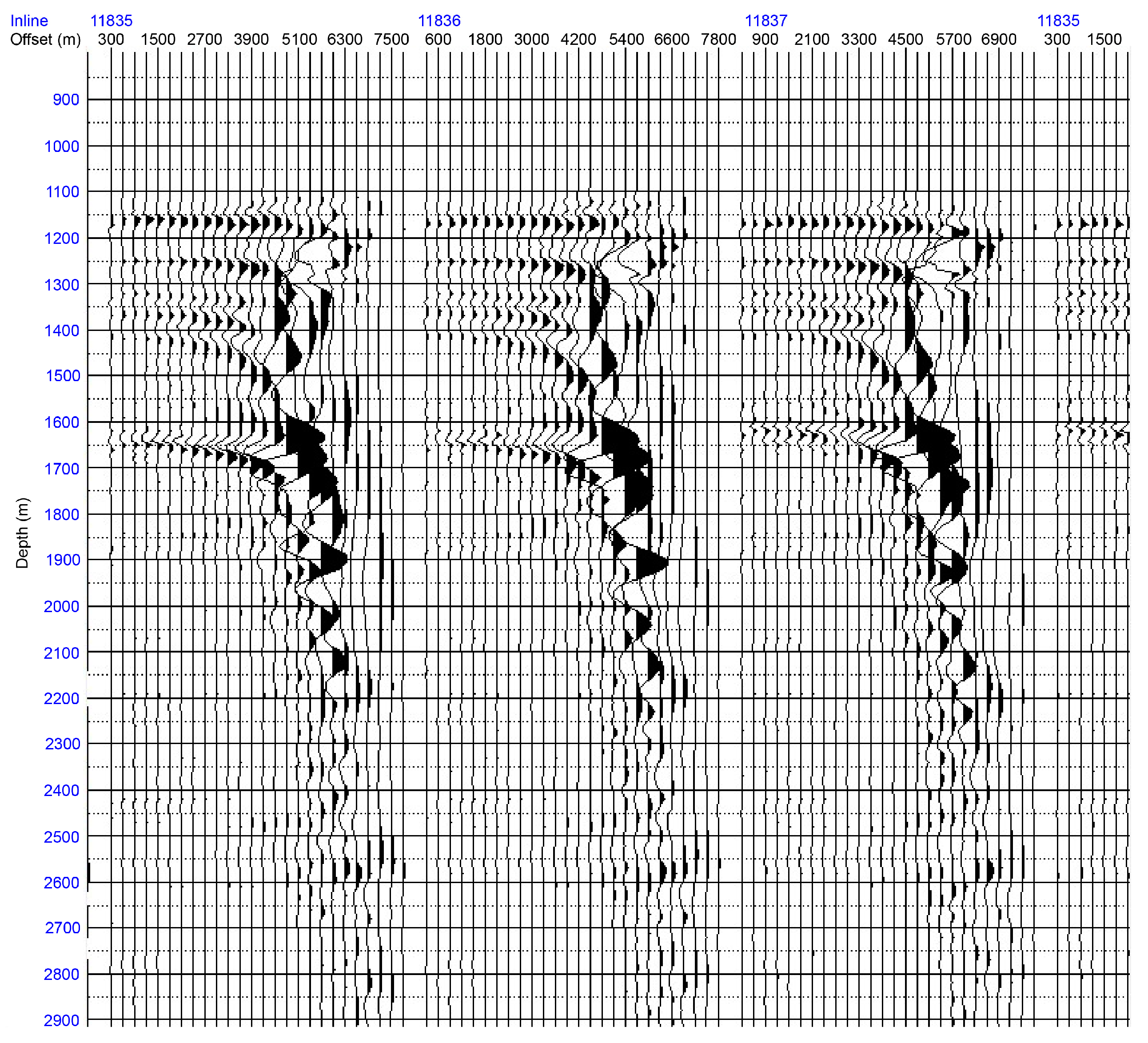


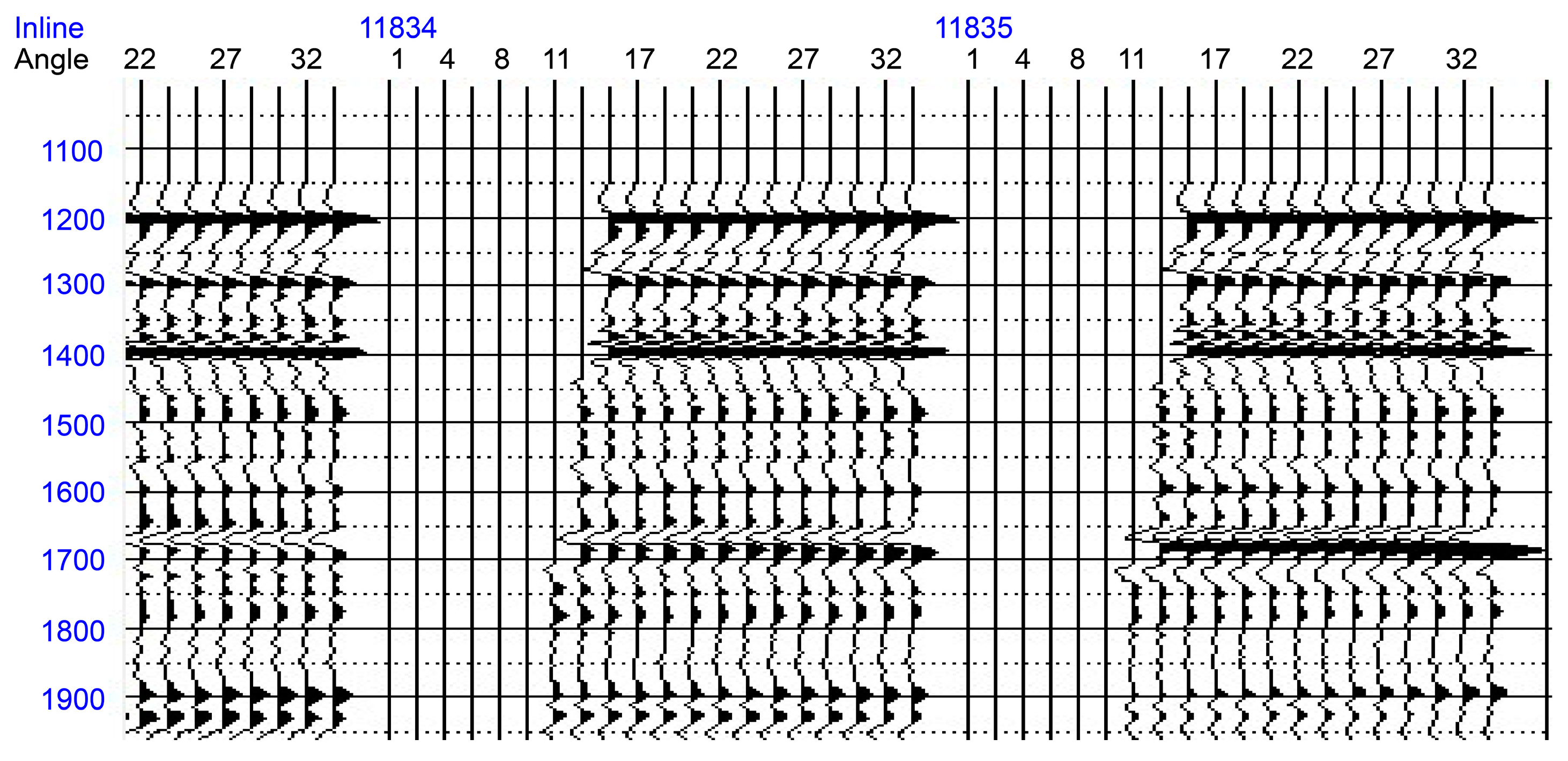
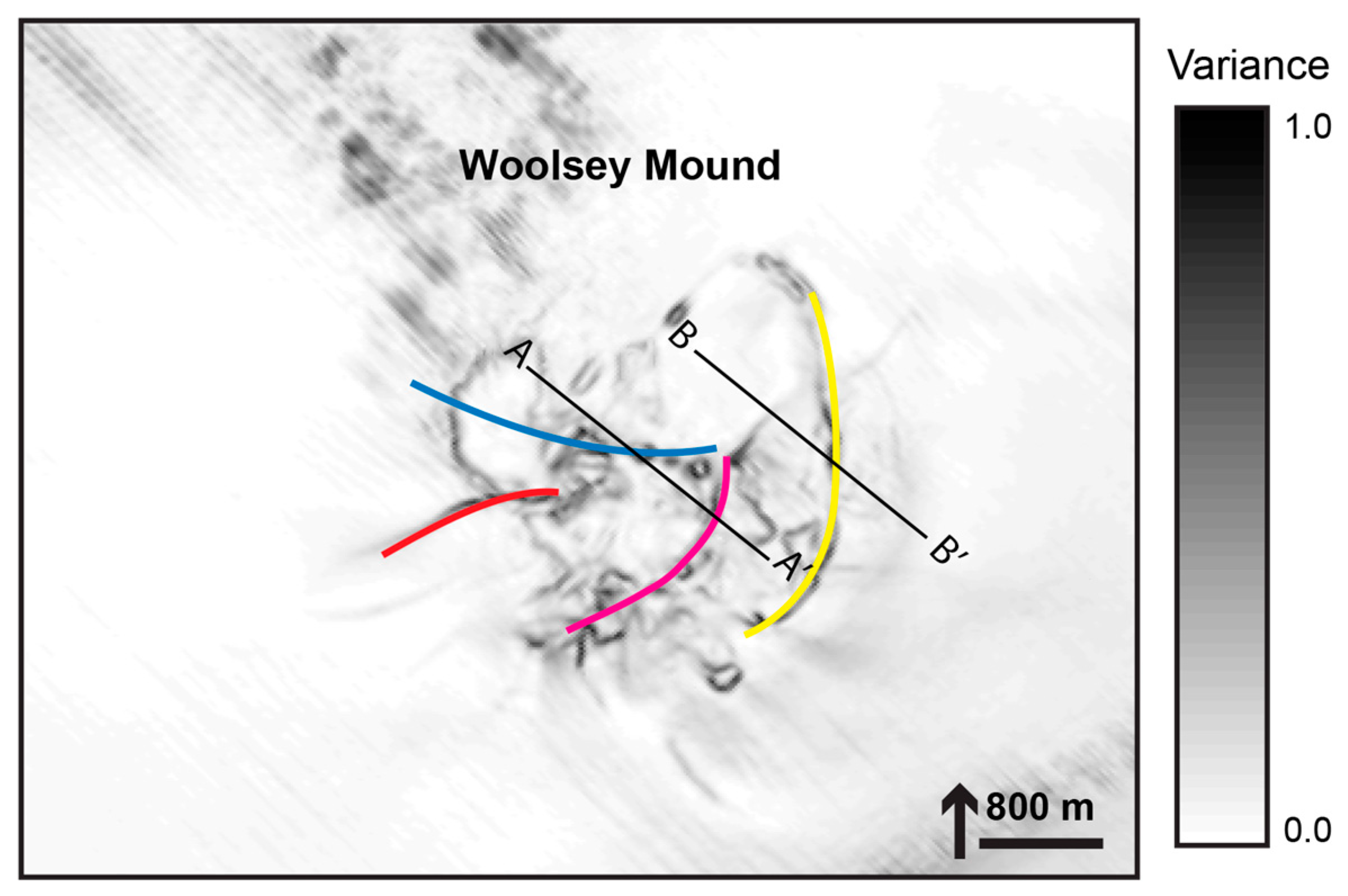
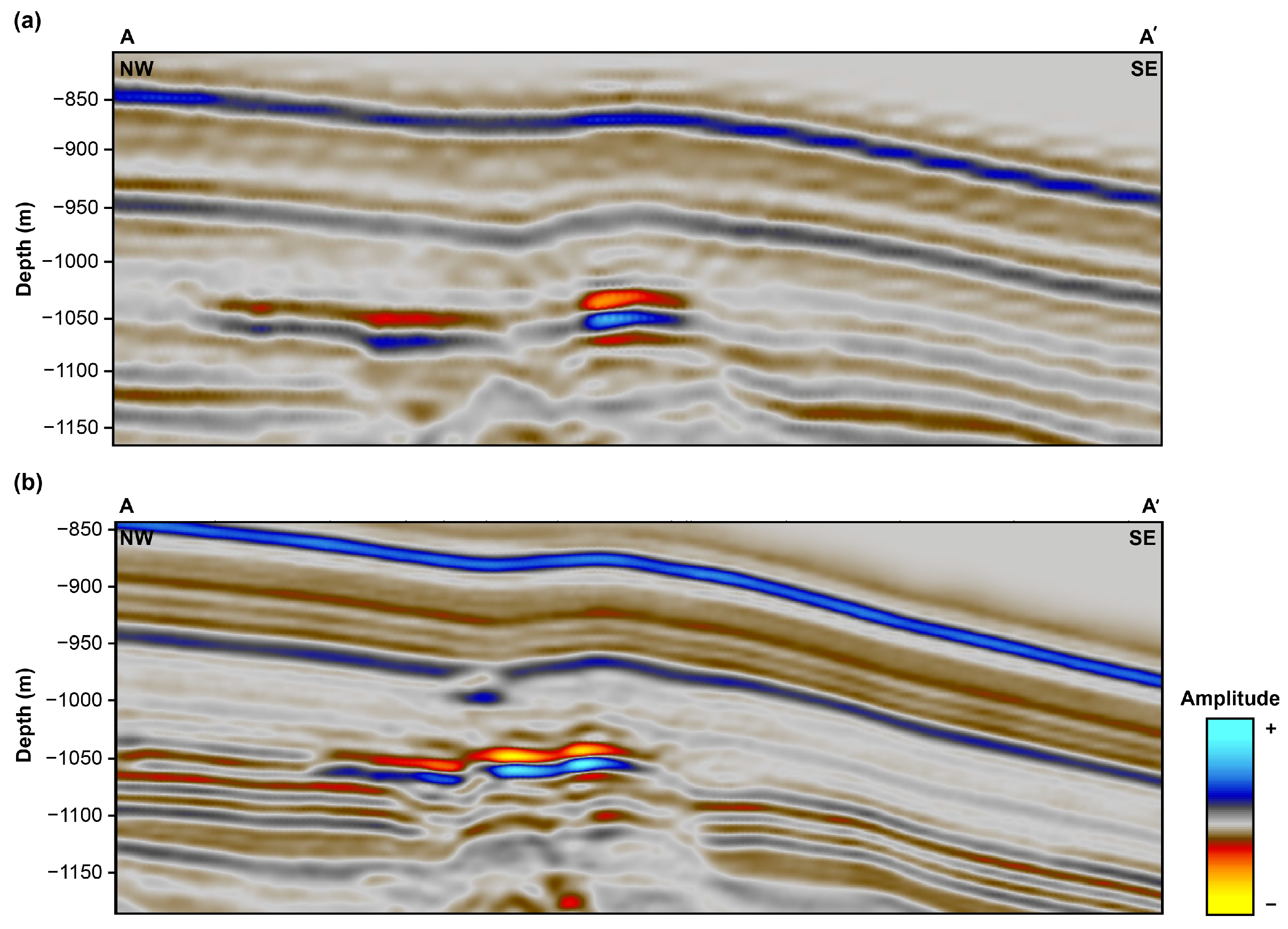
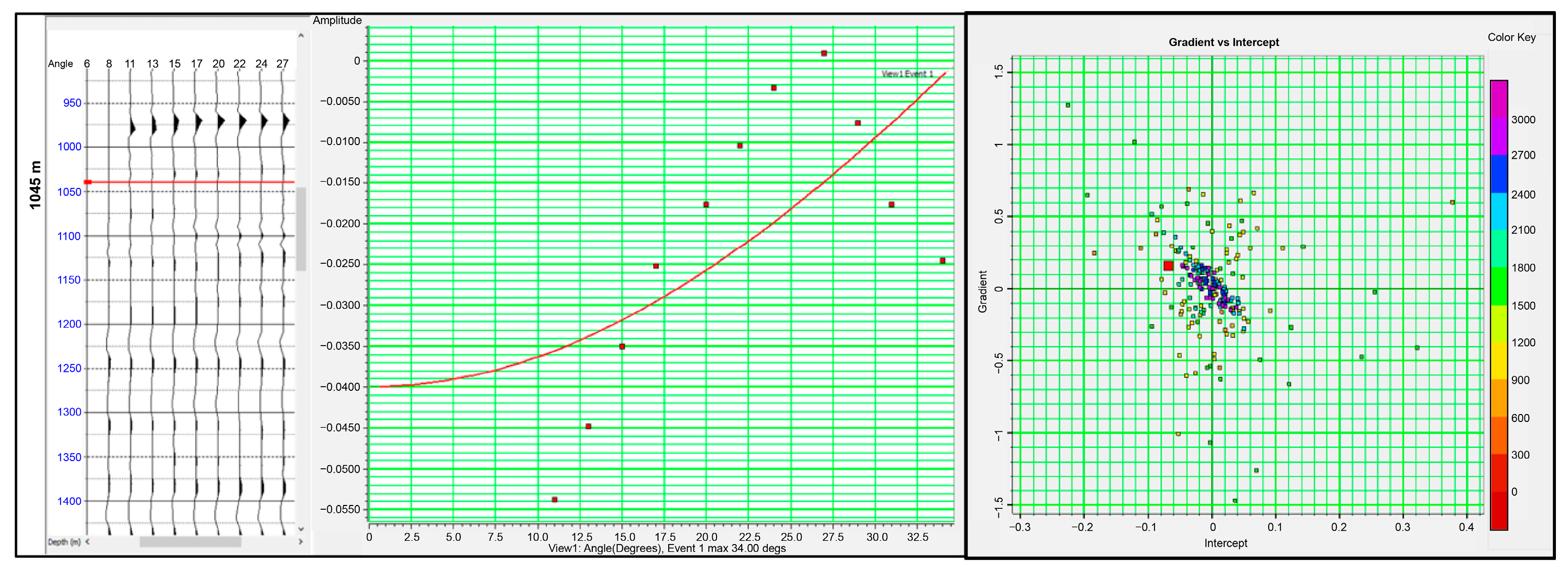
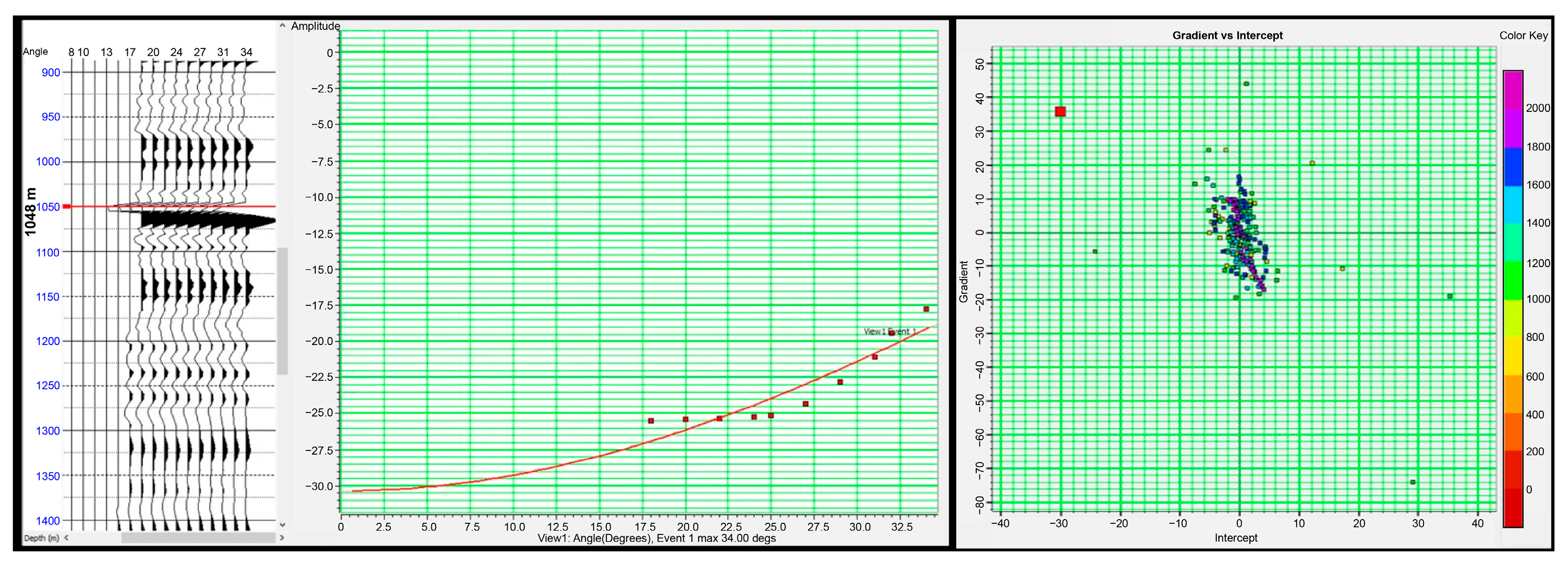
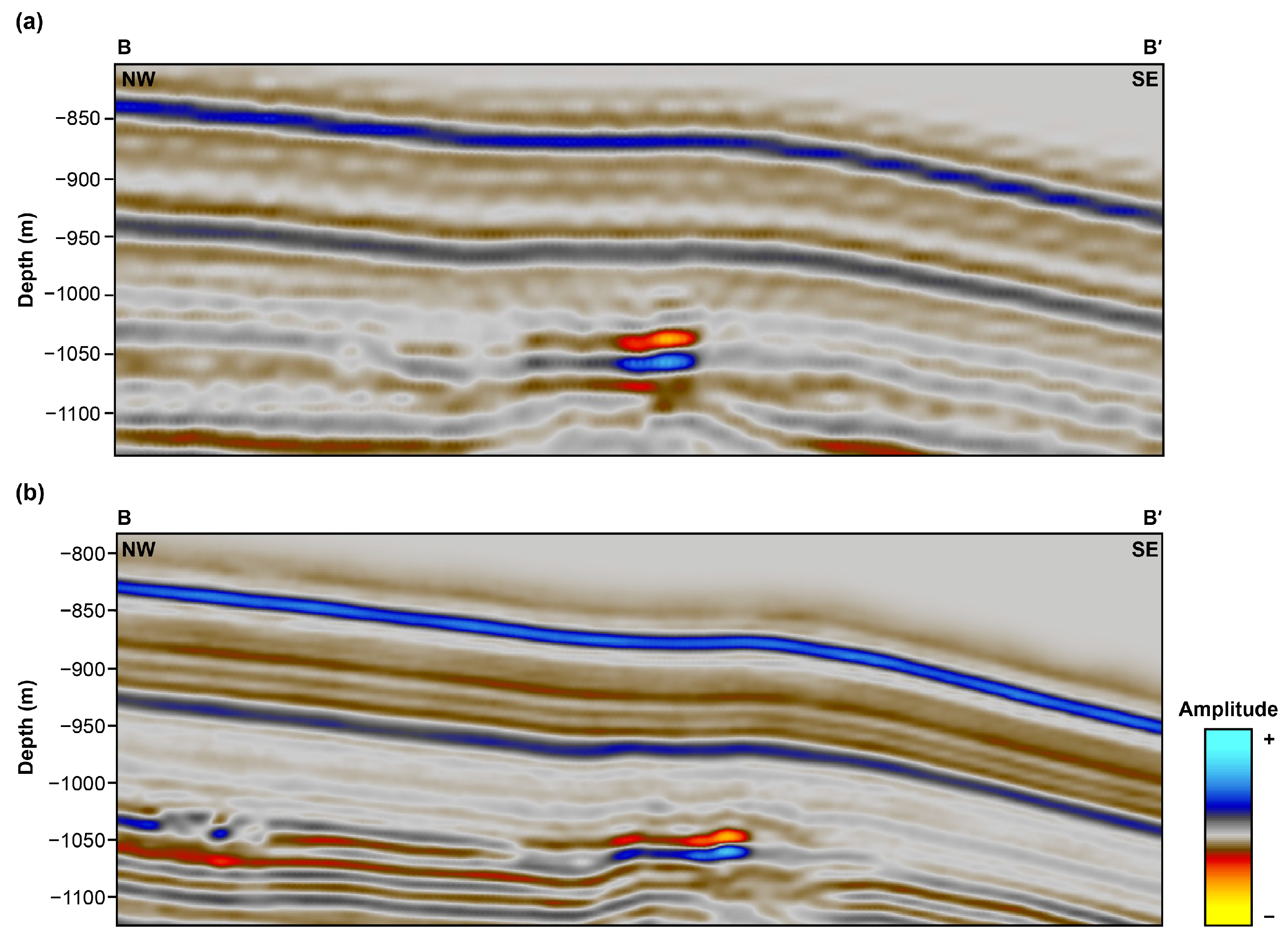
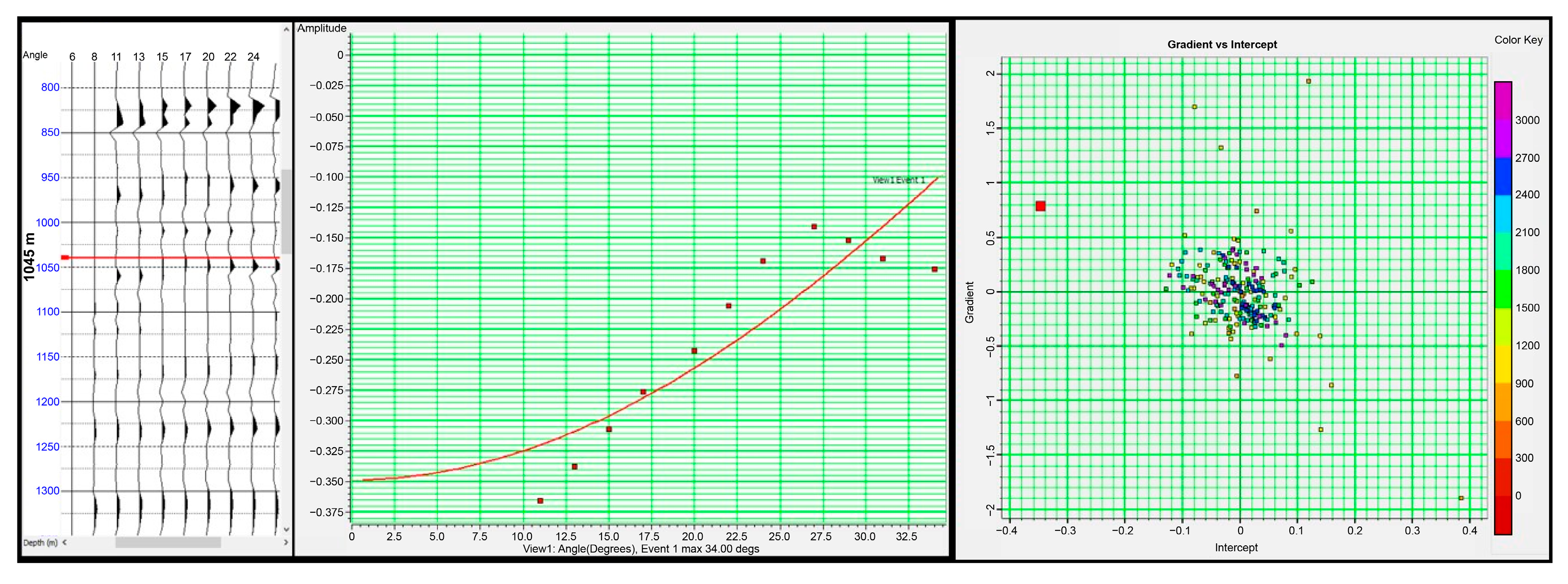
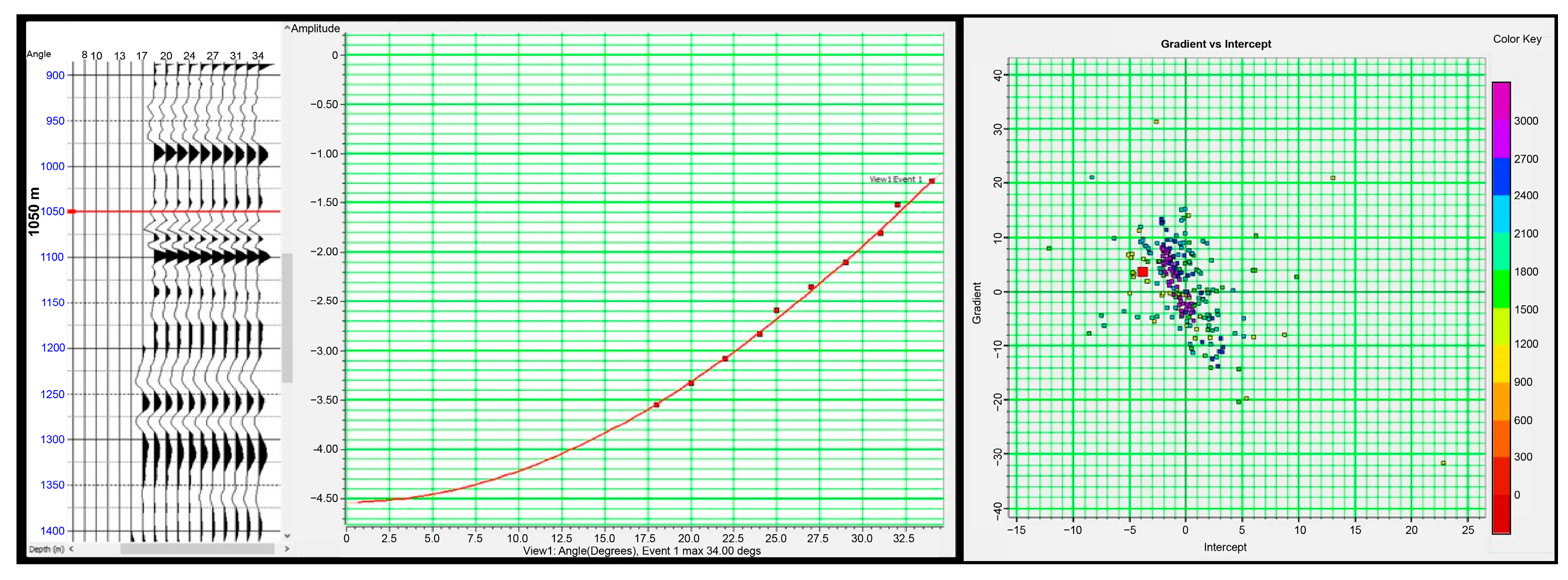
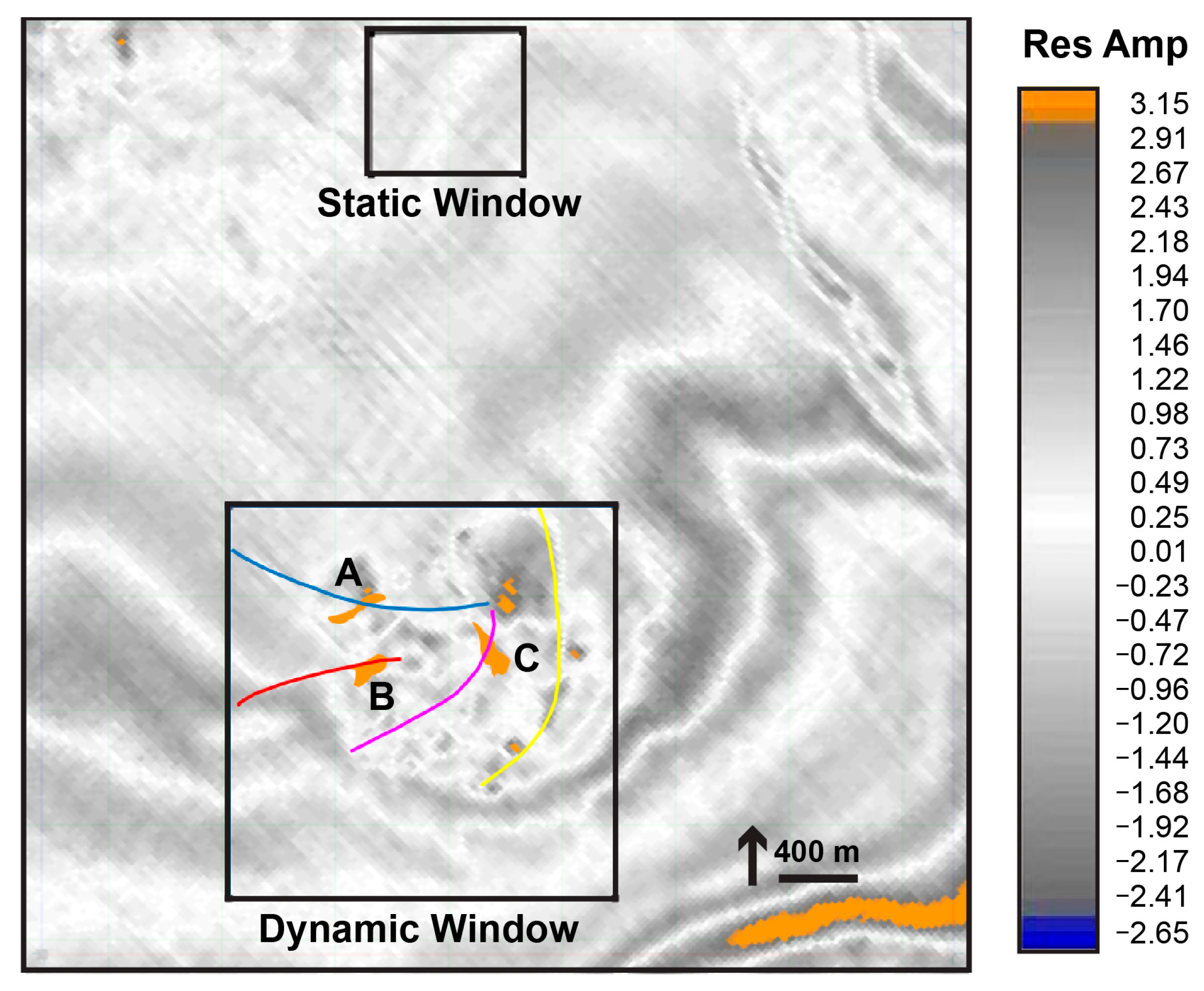
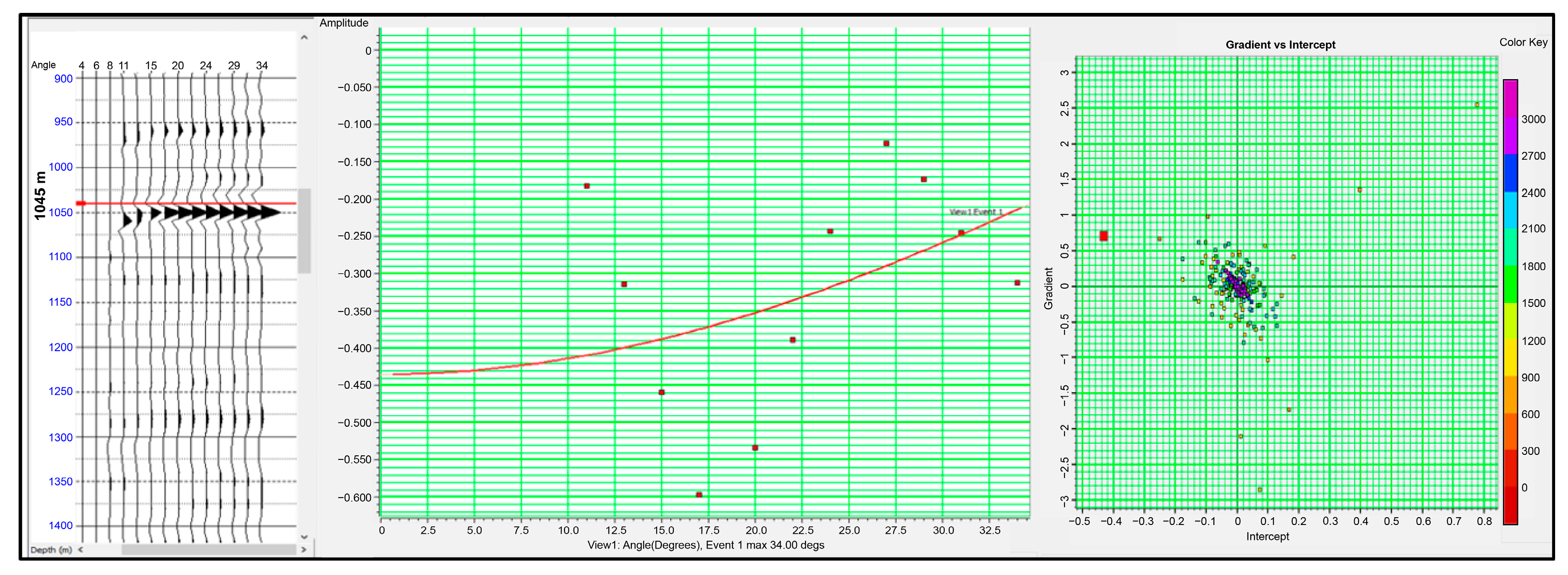
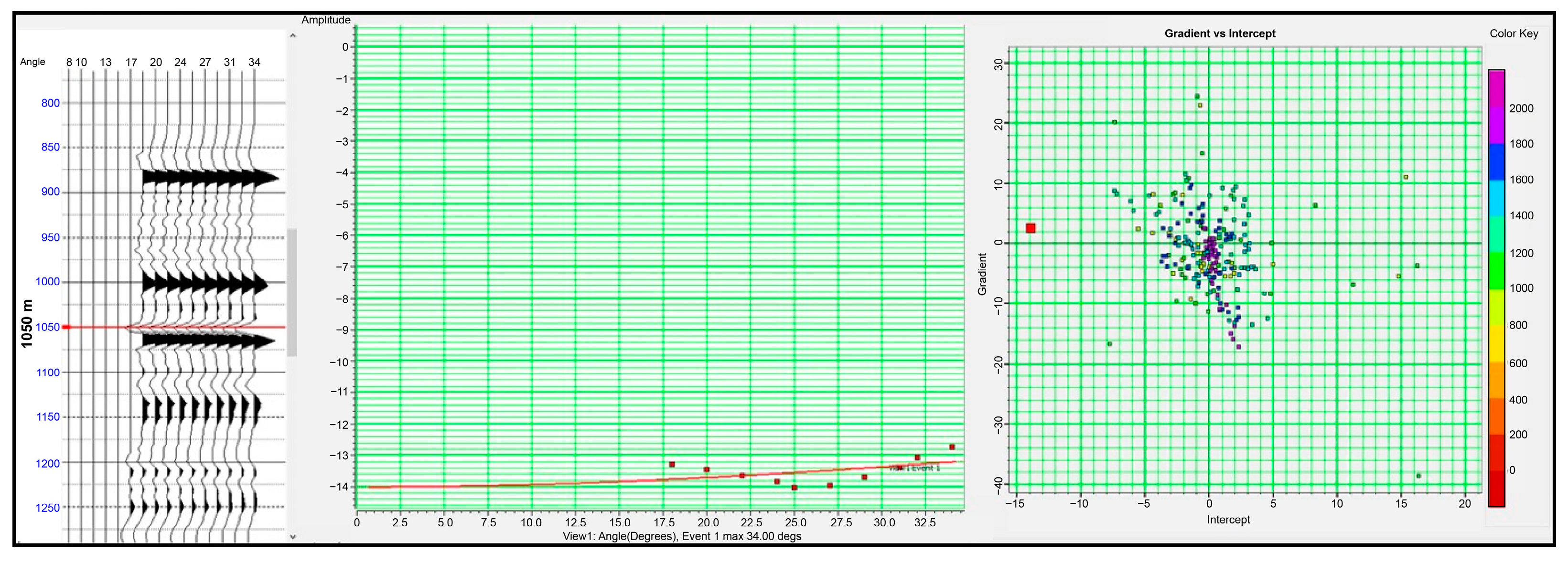

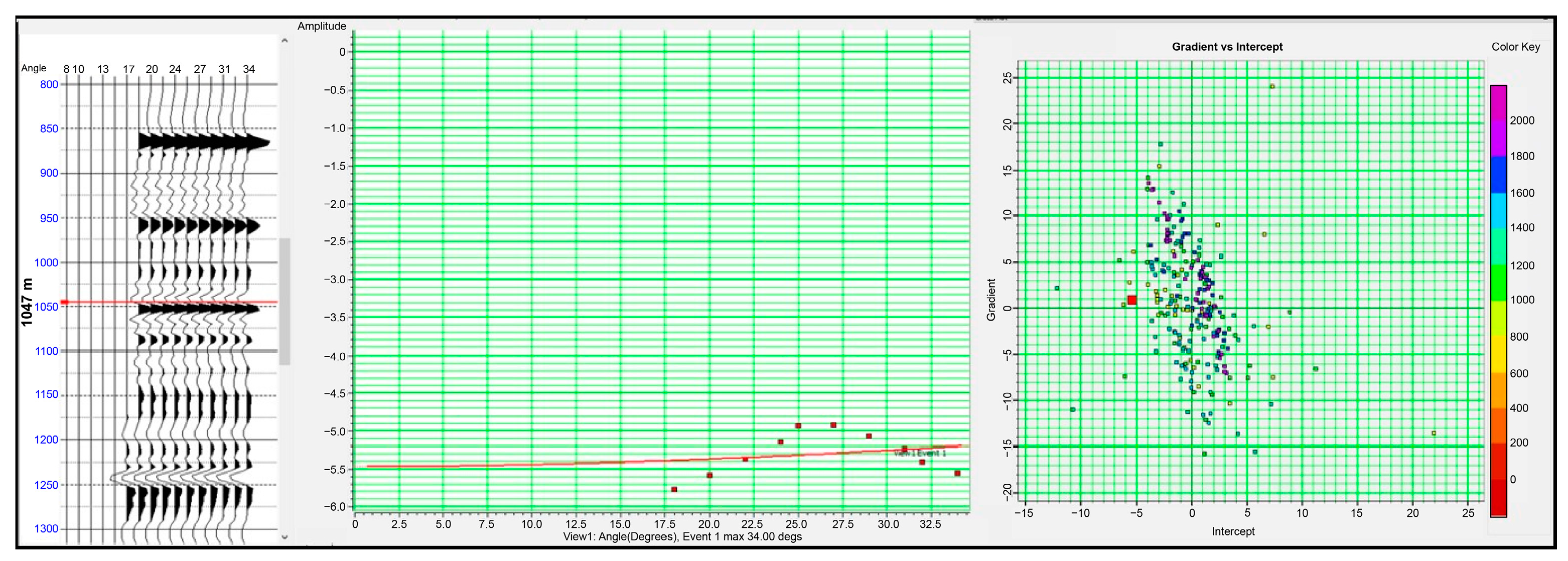
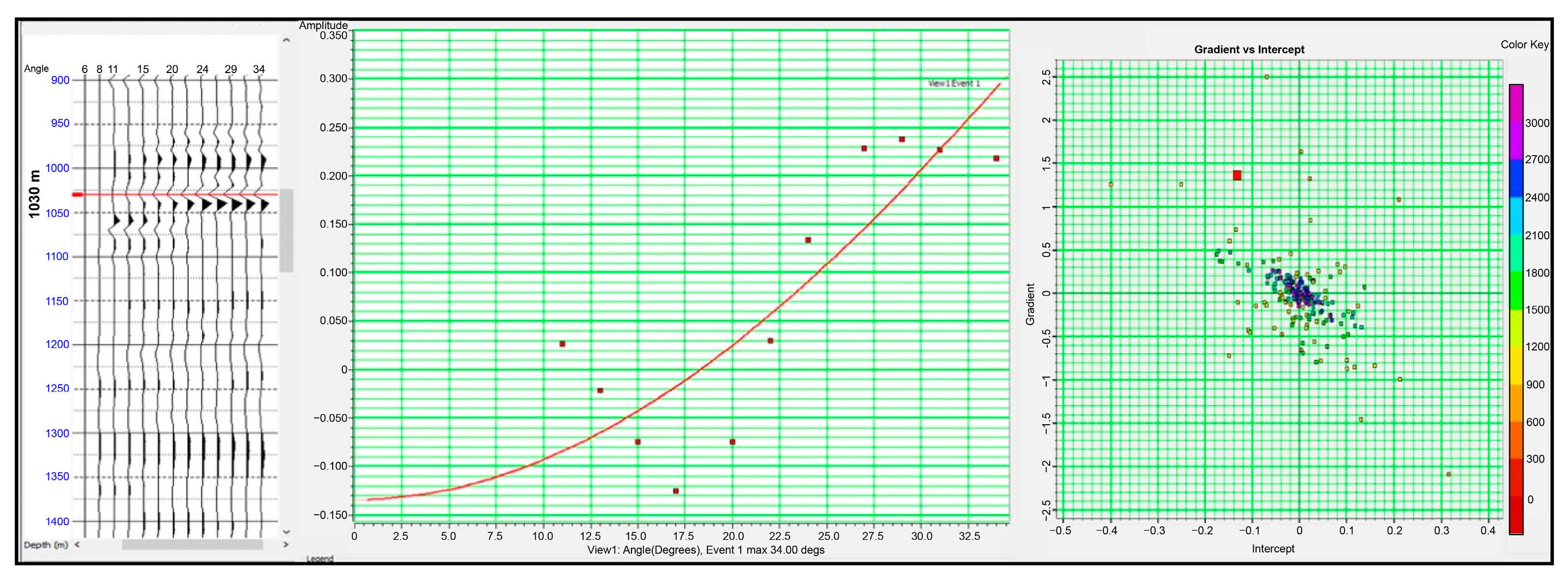

Disclaimer/Publisher’s Note: The statements, opinions and data contained in all publications are solely those of the individual author(s) and contributor(s) and not of MDPI and/or the editor(s). MDPI and/or the editor(s) disclaim responsibility for any injury to people or property resulting from any ideas, methods, instructions or products referred to in the content. |
© 2024 by the authors. Licensee MDPI, Basel, Switzerland. This article is an open access article distributed under the terms and conditions of the Creative Commons Attribution (CC BY) license (https://creativecommons.org/licenses/by/4.0/).
Share and Cite
Alam, S.; Knapp, C.; Knapp, J. Three-Dimensional Amplitude versus Offset Analysis for Gas Hydrate Identification at Woolsey Mound: Gulf of Mexico. GeoHazards 2024, 5, 271-285. https://doi.org/10.3390/geohazards5010014
Alam S, Knapp C, Knapp J. Three-Dimensional Amplitude versus Offset Analysis for Gas Hydrate Identification at Woolsey Mound: Gulf of Mexico. GeoHazards. 2024; 5(1):271-285. https://doi.org/10.3390/geohazards5010014
Chicago/Turabian StyleAlam, Saiful, Camelia Knapp, and James Knapp. 2024. "Three-Dimensional Amplitude versus Offset Analysis for Gas Hydrate Identification at Woolsey Mound: Gulf of Mexico" GeoHazards 5, no. 1: 271-285. https://doi.org/10.3390/geohazards5010014





